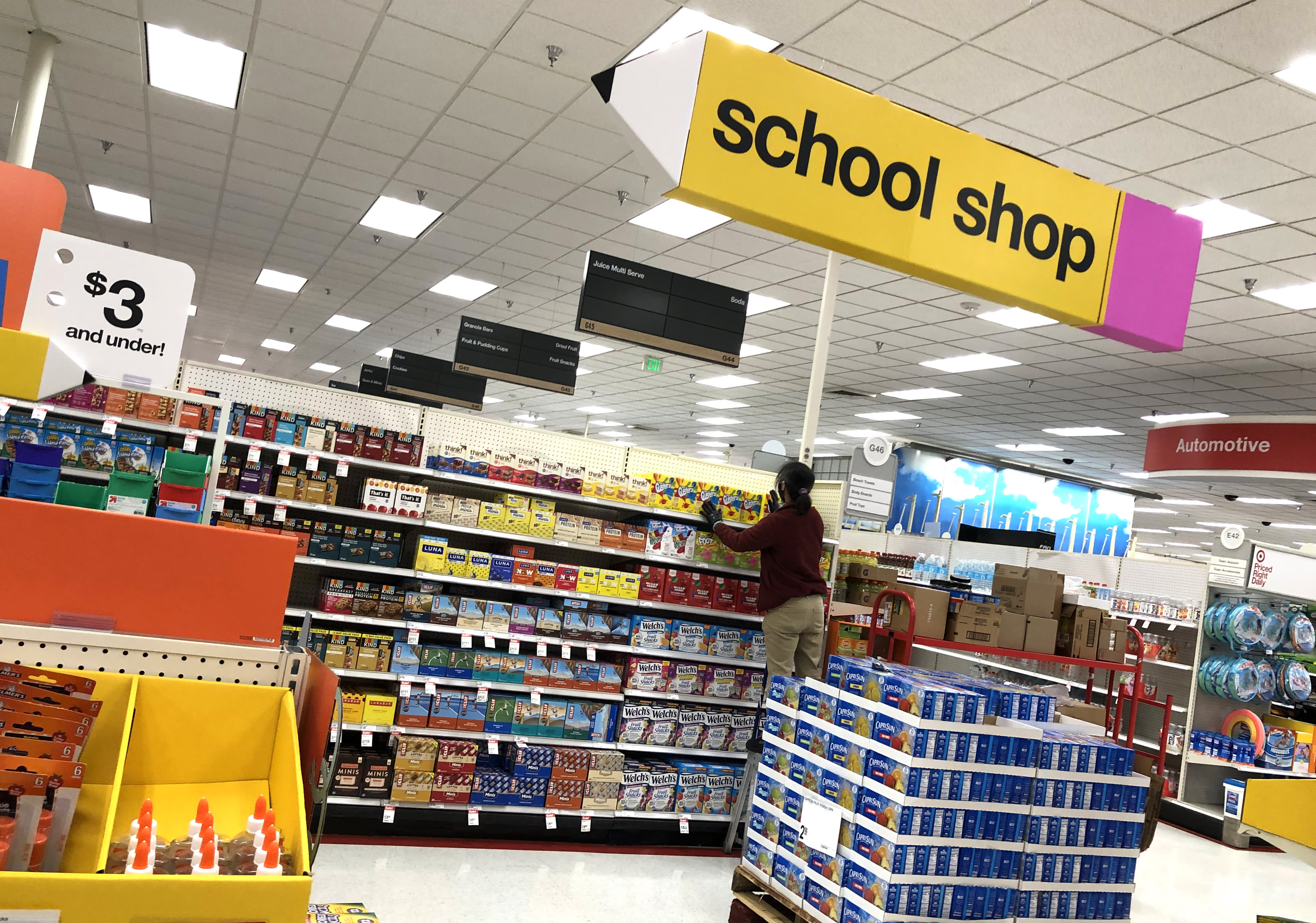Parents are preparing to pay more this back-to-school season as inflation hits wallets, KPMG survey finds

A worker stocks shelves of back-to-school supplies at a Target store on August 03, 2020 in Colma, California.
Justin Sullivan | Getty Images News | Getty Images
Parents are preparing to pay up this back-to-school season, as prices on items from clothing to notebooks are on the rise, according to new survey data.
The average parent’s spending per student is expected to be as much as $270, compared with roughly $250 in 2020, KPMG found when it surveyed more than 1,000 adult consumers across the United States in May.
Parents of children in preschool are planning to spend as much as 32% more money this year, the survey said, while parents of college-aged students will spend about 13% more. The sharp increases in these two groups are partially due to more people entering both preschool and college this fall, after putting those plans on hold a year ago.
But a key reason for the heightened spending is the growing expectation that items will cost more in the coming months, KMPG’s economists said. A combination of supply shocks to U.S. manufacturing suppliers and abruptly heightened consumer demand for goods, including school supplies, has created the perfect storm for this scenario to play out, KPMG said.
Among the survey respondents who said they planned to spend more money on their kids this year, 39% believe sticker prices are going up, with inflation on the rise.
Consumer prices in May accelerated at the fastest pace in nearly 13 years, a sign of how much inflationary pressure is building in the U.S. economy. Apparel prices rose 1.2% from April. Footwear prices jumped 1.4%. The cost of educational books and supplies rose 0.7% month over month, according to the latest data from the Labor Department.
Demand is also higher than it was a year ago, which means retailers are discounting a lot less, said Scott Rankin, strategy lead of KPMG’s consumer & retail division in the U.S.
“There are fewer promotions and coupon offers, so the price realization has gone up pretty significantly across a lot of retail categories,” Rankin said. “We haven’t quite yet seen the full-court press from the office supply stores and some of the mass merchandisers and the big e-commerce players … but I do think we are going to see less promotionally around [school] supplies.”
As more students head back to classrooms, a greater proportion of spending this back-to-school season will be devoted to items necessary for in-person learning. Categories including shoes, clothing and core school supplies such as notebooks will see the largest increases in share of a parent’s budget compared with 2020, KPMG said.
Consumers are anticipating spending less on electronics and office furniture — two categories that reaped the benefit of stay-at-home trends for much of last year.
For many parents, heading to a store like Office Depot or Target with their kids is a memorable back-to-school tradition.
And with Covid restrictions increasingly lifted, more people — 57% of those polled — expect to browse the aisles in person, compared with 44% planning to shop online, the survey found. E-commerce spending has jumped significantly from 2019 levels, when just 34% of respondents said they would buy items like loose-leaf paper and backpacks on the web.
When asked when they would be starting their back-to-school and back-to-college shopping this year, 33% of U.S. consumers said July, followed by 30% saying August, KPMG found. Ten percent of people said they’ve already started shopping for the upcoming school year.
For many families, the theme this back-to-school season will be “spend money and look great,” Rankin said. “Go out and get your Air Jordan 1s … If you can find them.”




